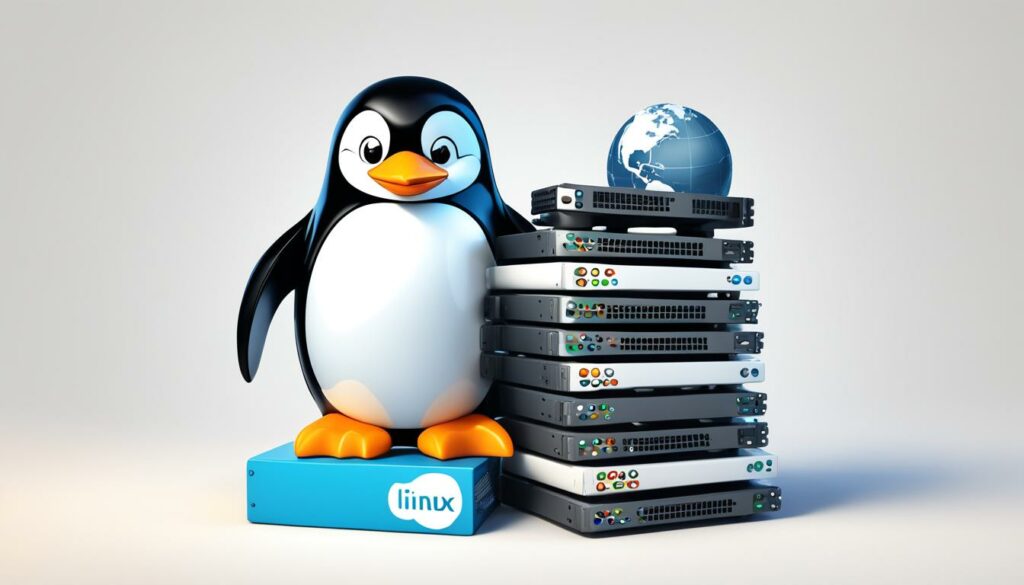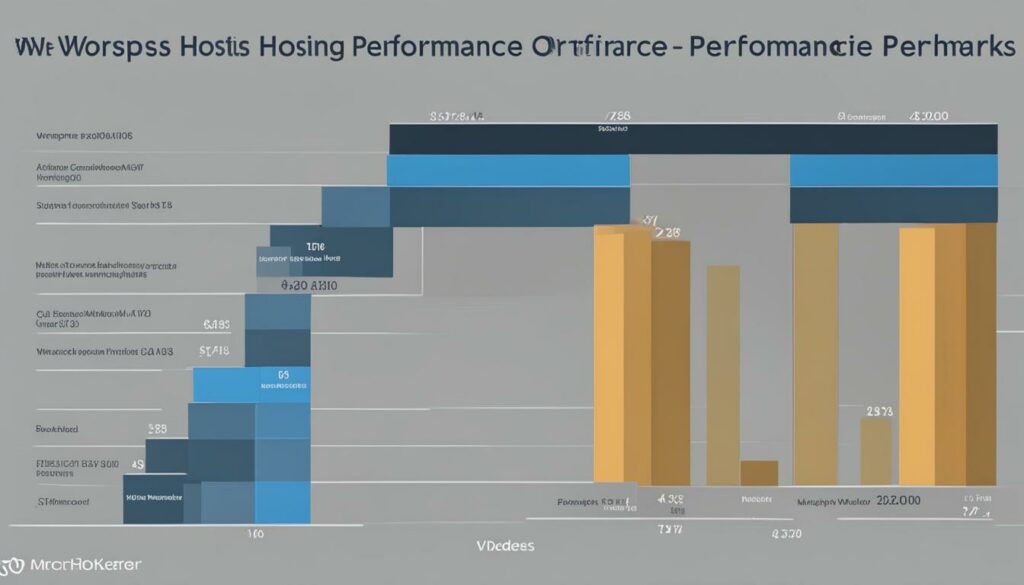Welcome to the world of LAMP (Linux, Apache, MySQL, PHP) stack! If you’re exploring web development, you’ve probably come across this powerful combination of technologies. In this tutorial, we will provide you with a comprehensive guide to the LAMP stack, its components, features, and benefits, giving you a solid understanding of its architecture and implementation.
The LAMP stack has gained immense popularity in the web development community due to its open-source nature, customization options, and support from a large community. Whether you’re a seasoned developer or just starting your web development journey, exploring the LAMP stack will give you the tools you need to build dynamic and robust web applications.
Are you ready to dive in and explore the LAMP stack? Let’s get started!
Key Takeaways:
- The LAMP stack consists of Linux, Apache, MySQL, and PHP, which work together to create a powerful environment for web development.
- Linux is the operating system that supports the LAMP stack, providing a stable and secure foundation.
- Apache is the web server responsible for handling requests and serving webpages in the LAMP stack.
- MySQL is the database management system used for storing and retrieving data in the LAMP stack.
- PHP is the programming language that enables the creation of dynamic web content in the LAMP stack.
Sign up now for BoostedHost’s WordPress Hosting to optimize your LAMP stack performance. Boost your web development with a reliable hosting solution. Sign up here.
Understanding the LAMP Architecture
In order to grasp the inner workings of the LAMP stack, it’s essential to understand its underlying architecture. The LAMP architecture comprises four distinct layers, each playing a crucial role in building a fully functional web application.
The first layer of the LAMP architecture is Linux, which serves as the operating system foundation. Linux provides a stable and reliable environment for the other components to operate smoothly. As an open-source operating system, Linux offers flexibility and customization options, making it a preferred choice for web development.
Next comes Apache, the second layer of the LAMP stack. Apache is a powerful web server that handles incoming requests from users’ browsers and serves webpages in response. It follows the HTTP protocol and is known for its ability to handle various types of content, both static and dynamic. Apache’s modular design allows for easy extensibility and customization, making it a popular choice among developers.
The third layer of the LAMP stack is MySQL, a robust relational database management system. MySQL enables developers to store, manage, and retrieve data for their web applications. It supports the SQL language and offers features such as data replication and scalability. With MySQL, developers can create efficient and secure databases, ensuring that their web applications perform optimally.
Lastly, we have PHP, the fourth layer of the LAMP stack. PHP, commonly known as a server-side scripting language, enables the dynamic generation of web content. It seamlessly integrates with Apache and MySQL to process user input and interact with the database, providing a truly interactive web experience. The versatility and ease of use of PHP make it a widely adopted language in the LAMP stack.
Each layer in the LAMP architecture contributes to the overall functionality and performance of the stack. Linux provides a solid foundation, Apache serves webpages, MySQL manages data, and PHP handles dynamic content. The integration of these components ensures a cohesive and efficient web application development environment.
“The LAMP architecture is like a well-orchestrated symphony, with each layer playing its part to create a harmonious web development experience.”
LAMP Architecture Summary
| Layer | Description |
|---|---|
| Linux | The operating system foundation for the LAMP stack, providing stability and customizability. |
| Apache | A powerful web server responsible for handling incoming requests and serving webpages. |
| MySQL | A robust relational database management system used for storing and managing data. |
| PHP | A server-side scripting language that enables the creation of dynamic web content. |
Linux: The Operating System at the Core of LAMP
Linux, an open-source operating system, forms the foundation of the LAMP stack. With its highly customizable nature, Linux can be tailored to meet the specific requirements of different applications, making it a versatile choice for web development. As the operating system of the LAMP stack, Linux provides a stable and secure environment, ensuring the smooth operation of web applications.
One of the key strengths of Linux is its compatibility with the other components of the LAMP stack. While the LAMP stack is commonly associated with Linux, it is worth noting that the other components, namely Apache, MySQL, and PHP, are cross-platform and can function with other operating systems as well. Linux, however, is optimized to work seamlessly with these components, offering an ideal environment for LAMP web development.
Linux’s reputation for stability and security makes it a popular choice for hosting web applications. Its robust architecture and efficient resource management contribute to improved performance and uptime. Linux’s extensive community and active development ensure continuous updates and enhancements, providing developers with a reliable and well-supported platform for their projects.
Linux serves as a solid foundation for the LAMP stack, delivering a powerful and adaptable operating system for web development.
Why Choose Linux for the LAMP Stack?
Linux is favored for the LAMP stack due to several compelling reasons:
- Open-source nature: Linux is free to use, allowing developers to customize and modify the code to suit their specific requirements.
- Wide compatibility: Linux supports a vast range of hardware architectures and can be installed on various devices, making it highly versatile.
- Robust security: Linux is renowned for its strong security features, protecting web applications from external threats and ensuring data integrity.
- Extensive community support: Linux benefits from a large and active user community, providing access to resources, forums, and expert help.
- Unmatched stability: Linux’s stability ensures the smooth and uninterrupted operation of web applications, resulting in enhanced user experience.
The combination of Linux with the other components of the LAMP stack creates a powerful development environment that fosters innovation and facilitates the creation of high-quality web applications. Whether you are a seasoned developer or just starting, Linux’s flexibility, compatibility, and community support make it an excellent choice for LAMP web development.
| Benefits of Linux for the LAMP Stack |
|---|
| Open-source nature |
| Wide compatibility |
| Robust security |
| Extensive community support |
| Unmatched stability |
To ensure optimal performance and compatibility, consider using BoostedHost’s WordPress Hosting, designed specifically for the LAMP stack. Sign up now through this link: www.boostedhost.com/wordpress-hosting.

Apache: The Web Server of the LAMP Stack
Apache is an open-source web server that plays a crucial role in the LAMP stack, acting as the second layer. It serves as the bridge between your web application and the users’ browsers, handling incoming requests and delivering webpages seamlessly. With its extensive features, Apache ensures optimal performance and robust functionality for your LAMP-powered websites.
Apache is built on the Hypertext Transfer Protocol (HTTP) and efficiently processes the requests made by users. Whether you’re serving static web content or dynamic pages, Apache can handle it all. It supports a wide range of content types, making it versatile and adaptable for diverse web projects.
One notable feature of Apache is its modular architecture, which allows for the easy integration of additional functionalities and extensions. This flexibility enables developers to customize and enhance their web server according to their specific requirements. Furthermore, Apache offers various filters for encryption and compression, ensuring secure and efficient data transfer.
If you’re looking for a reliable web server for your LAMP stack, Apache is an excellent choice. It provides a stable and scalable foundation for your web applications, enabling seamless communication between the server and the users’ browsers.
Apache Features Overview
Here’s an overview of some key features offered by Apache:
| Feature | Description |
|---|---|
| Modular Design | Apache’s modular architecture allows for easy integration of additional functionalities and extensions. |
| HTTP Protocol Support | Apache efficiently processes requests using the Hypertext Transfer Protocol (HTTP). |
| Content Handling | Apache can handle various types of content, including static and dynamic web content. |
| Filtering | Apache supports filters for encryption and compression, ensuring secure and efficient data transfer. |
| Virtual Hosting | Apache enables the hosting of multiple websites on a single server, optimizing resource utilization. |
| Load Balancing | Apache offers load balancing capabilities to distribute traffic efficiently across multiple servers. |
Apache’s extensive features and capabilities make it the most commonly used web server in the LAMP stack. However, it’s worth mentioning that alternatives like NGINX have been gaining popularity in recent years due to their high performance and efficiency. Ultimately, the choice between Apache and other web servers depends on your specific project requirements and preferences.
Next, we’ll explore the third layer of the LAMP stack: MySQL, the powerful database management system that works seamlessly with Apache and other components.

MySQL: The Database Management System of LAMP
In the LAMP stack, MySQL plays a crucial role as the database management system. It is an open-source relational database management system that enables web applications to store, manage, and query data efficiently.
MySQL supports the SQL language, providing developers with a powerful toolset to manipulate databases. With MySQL, you can easily create, update, and retrieve data, making it ideal for applications that require structured data management.
One of MySQL’s key features is its scalability. It can handle large volumes of data and support high-traffic websites without compromising performance. Its ability to scale horizontally by adding more servers to distribute the workload makes it a reliable choice for web applications.
“MySQL allows you to store various types of data, such as customer records, sales data, and inventories, in a structured manner. Its robustness and scalability make it a valuable asset in the LAMP stack.”
MySQL Features:
- Relational database management system
- Supports the SQL language for data manipulation
- Scalable and capable of handling large volumes of data
- Ensures data integrity and consistency
- Replication and clustering for high availability
- Security features to protect data
- Efficient indexing and query optimization
- Integration with other components of the LAMP stack
By leveraging MySQL’s capabilities, developers can create robust and scalable web applications within the LAMP stack. Its ability to handle data efficiently and its extensive feature set make it a reliable choice for database management in the LAMP ecosystem.

BoostedHost offers excellent WordPress hosting services that optimize the performance of web applications built on the LAMP stack. Sign up through this link to experience the benefits of WordPress hosting.
PHP: The Programming Language of LAMP
In the LAMP stack, PHP plays a crucial role as the programming language that enables developers to create dynamic web content. With its acronym standing for PHP: Hypertext Preprocessor, PHP is a versatile and widely used scripting language embedded within HTML.
By leveraging PHP, developers can achieve server-side processing of requests, allowing for the generation of dynamic webpages. PHP interacts smoothly with the Apache web server and MySQL database, facilitating seamless integration and data retrieval.
The LAMP stack benefits greatly from PHP’s flexibility and ease of use. As a widely adopted programming language in the stack, PHP empowers developers to build robust web applications efficiently. With its extensive library of functions and frameworks, PHP enables the creation of interactive and user-friendly web experiences.
“PHP is a powerful programming language that has revolutionized web development. Its seamless integration with the other components of the LAMP stack makes it a popular choice among developers worldwide.”
PHP’s syntax is user-friendly, allowing both beginners and experienced developers to write clean and maintainable code. Its extensive documentation and a large community of developers contribute to the robustness and support of the language.
Whether you’re building a simple blog or a complex e-commerce platform, PHP provides the necessary tools and features to develop scalable and secure web applications within the LAMP stack.
Benefits of PHP in the LAMP Stack
Let’s explore some of the key benefits of PHP in the LAMP stack:
- Flexibility: PHP’s versatility allows developers to create a wide range of web applications, from simple websites to enterprise-grade systems.
- Rapid development: PHP’s intuitive syntax, extensive library, and frameworks enable developers to build web applications quickly and efficiently.
- Open-source community: PHP has a dedicated community of developers who contribute to its ongoing improvement, providing support, and sharing valuable resources.
- Integration with other LAMP components: PHP seamlessly integrates with Apache and MySQL, forming a robust environment for web development.
- Scalability: PHP’s ability to handle high traffic volumes and interact with databases efficiently makes it suitable for scalable web applications.
BoostedHost: Your Partner in PHP Development
When it comes to hosting your PHP-based web applications, BoostedHost offers a reliable and optimized solution. Our WordPress Hosting is designed to provide optimal performance for PHP applications within the LAMP stack. Sign up now through this link: www.boostedhost.com/wordpress-hosting.

With BoostedHost, you can harness the power of PHP and the LAMP stack to create exceptional web experiences.
LAMP Advantages and Benefits
The LAMP stack offers a range of advantages and benefits for web development. Let’s explore why it has become such a popular choice among developers.
1. Open-Source Flexibility
One major advantage of the LAMP stack is that it is open-source. This means that the software components – Linux, Apache, MySQL, and PHP – are freely available for use and customization. With an open-source stack, you have the freedom to modify and adapt the codebase to meet your specific requirements. This level of flexibility empowers developers to create unique and innovative web applications.
2. Active Community and Support
The LAMP stack benefits from a large and active community of developers. This community offers tremendous support, resources, and expertise, making it easier for developers to find solutions and troubleshoot issues. The collaborative nature of the community ensures that the stack continues to evolve, improve, and stay relevant in the rapidly changing landscape of web development.
3. Easy Setup and Stability
Setting up the LAMP stack is relatively straightforward compared to other web development stacks. The individual components are well-documented and have easy-to-follow installation procedures. Moreover, the LAMP stack has been in use for many years and has proven its stability and reliability. This maturity translates to a robust and stable environment for creating web applications.
4. Efficient Performance
The LAMP stack is known for its efficiency in handling web applications. The combination of Linux, Apache, MySQL, and PHP ensures that each component seamlessly integrates with the others, resulting in optimal performance. This efficiency allows developers to create web applications that can compete with commercial software solutions, without compromising on speed or resource usage.
5. Cost-Effective Solution
As an open-source stack, the LAMP stack offers a cost-effective solution for web development. By utilizing free and open-source components, developers can significantly reduce the overall project costs. Additionally, the availability of free resources, tools, and frameworks further lowers the barrier to entry for developing web applications with the LAMP stack.
6. Wide Compatibility
The LAMP stack’s individual components – Linux, Apache, MySQL, and PHP – are all cross-platform, meaning they can be used with different operating systems. This compatibility allows developers to deploy their web applications on a wide range of server environments, providing flexibility and options for hosting and scaling their projects.
To summarize, the LAMP stack offers numerous advantages and benefits for web development. Its open-source nature, active community, flexibility, stability, performance, and cost-effectiveness make it a popular choice among developers. By leveraging the LAMP stack, you can create powerful and dynamic web applications that meet your specific needs and exceed user expectations.
LAMP Alternatives and Variants
While the LAMP stack is popular, there are also alternatives and variants available. As a developer, you have the freedom to explore different options that best suit your specific requirements and preferences. Here are some noteworthy alternatives to the LAMP stack:
- MEAN Stack: The MEAN stack comprises MongoDB, Express.js, AngularJS, and Node.js. It offers an alternative set of technologies for web development, with MongoDB as the NoSQL database, Express.js for server-side framework, AngularJS for front-end development, and Node.js as the runtime environment. This stack is particularly suitable for building dynamic and real-time applications.
- LEMP Stack: The LEMP stack is a variant of the LAMP stack, with the primary difference being the replacement of Apache by NGINX as the web server. LEMP stands for Linux, NGINX, MySQL/MariaDB, and PHP/Perl/Python. NGINX is known for its high-performance and scalability, making the LEMP stack a popular choice for high-traffic websites and applications.
- LAPP Stack: The LAPP stack is another variant, similar to the LAMP stack, but with PostgreSQL as the database management system instead of MySQL. LAPP represents Linux, Apache, PostgreSQL, and PHP. PostgreSQL is a powerful and feature-rich open-source database system known for its reliability and scalability. If your project requires advanced database capabilities, the LAPP stack might be a suitable alternative.
These stacks provide different combinations of operating systems, web servers, database management systems, and programming languages. By considering these alternatives to the LAMP stack, you can select the technology stack that aligns best with your project’s requirements and your own expertise.
Explore the various alternatives and variants to the LAMP stack and choose the one that suits your needs. Remember, each stack has its unique features and advantages, allowing you to unleash your creativity and build outstanding web applications. Don’t be afraid to experiment and find the perfect match for your development projects!
High Availability and Load Balancing in LAMP
Ensuring high availability and scalability is crucial when implementing the LAMP stack for your web application. Fortunately, there are additional components and techniques that can help you achieve this.
Load Balancing for Improved Performance
To handle a large volume of incoming traffic and prevent overload, implementing load balancing is essential. Load balancing distributes the traffic across multiple web servers, optimizing performance and ensuring efficient use of resources. By evenly distributing the workload, load balancing helps maintain high availability and prevents any single server from becoming overwhelmed.
Quote: “Implementing load balancing in the LAMP stack is like having multiple chefs working together in a busy restaurant kitchen. Each chef takes on a specific task, ensuring that the meals are prepared quickly and efficiently, even during peak hours.”
Load balancing techniques can vary based on your specific requirements and the load balancer software or hardware you choose to implement. Some popular load balancing methods include round-robin, least connections, and IP hash. These methods ensure a fair distribution of requests and reduce the risk of bottlenecks in your web application.
High Availability Setups for Redundancy and Fault Tolerance
In addition to load balancing, implementing high availability setups is crucial for ensuring uninterrupted service in the LAMP stack. High availability setups involve using multiple web and database servers, which work together as a redundant cluster. If one server fails, the others take over, preventing downtime and maintaining consistent performance.
One method for achieving high availability is using a load balancer in combination with multiple web servers. This setup allows for automatic failover, meaning that if a web server becomes unresponsive, the load balancer routes traffic to an available server.
Similarly, for database servers, techniques like replication can be employed to synchronize data across multiple servers. Replication involves maintaining identical copies of the databases on different servers, ensuring data redundancy and fault tolerance. In the event of a failure, the standby server can take over seamlessly, minimizing downtime and data loss.
LAMP Scalability with Load Balancing and High Availability
By combining load balancing and high availability techniques, you can achieve optimal scalability in the LAMP stack. Load balancing ensures that your web servers efficiently handle incoming traffic, while high availability setups provide redundancy and fault tolerance.
Scaling horizontally by adding more web and database servers to your architecture allows you to handle increased traffic and user demands without sacrificing performance or availability. As your application grows, you can easily scale your infrastructure by extending the load balancer’s capacity and adding more server resources to the cluster.
With load balancing and high availability in place, your LAMP stack is well-equipped to handle high traffic loads, prevent bottlenecks, and deliver an exceptional user experience.
| Benefits of High Availability and Load Balancing in LAMP | Load Balancing | High Availability |
|---|---|---|
| Improved performance and response time | An even distribution of incoming traffic | Redundant servers prevent downtime |
| Scalability to handle increased traffic | Efficient utilization of server resources | Automatic failover in case of server failures |
| Fault tolerance and increased reliability | Prevention of overload on individual servers | Data replication for backup and disaster recovery |
Open-Source Tools and Support in the LAMP Stack
The LAMP stack leverages the power of open-source tools, offering a range of benefits to developers. By utilizing open-source technologies, the LAMP stack enables the community to access, modify, and enhance the source code freely. This collaborative environment fosters innovation and continuous improvement within the LAMP ecosystem.
The open nature of the LAMP stack encourages the development of a variety of tools and extensions that enhance its functionality. These tools can help streamline workflows, improve performance, and add new features to web applications built on the LAMP stack.
One of the significant advantages of the LAMP stack is the active and vibrant community around it. The LAMP community provides extensive support, documentation, and resources for developers using the stack. Whether you’re a beginner or an experienced developer, you can tap into the wealth of knowledge and expertise shared by the LAMP community.
“The LAMP community has been instrumental in my web development journey. The support and guidance I’ve received from fellow developers have helped me overcome challenges and improve my skills.” – John, LAMP Stack enthusiast
The LAMP stack’s community support goes beyond technical assistance. It also encompasses valuable insights, best practices, and success stories shared by fellow developers. This collaborative environment fosters a sense of belonging, encourages learning, and accelerates growth within the LAMP community.
BoostedHost: The Perfect Partner for Your LAMP Development
If you’re looking for optimal performance and seamless LAMP stack support, BoostedHost’s WordPress Hosting is an ideal choice. With BoostedHost, you can enjoy a reliable hosting environment tailored specifically to the needs of LAMP stack applications. Sign up now through this link:
LAMP Stack Open-Source Tools
| Tool | Description |
|---|---|
| Linux | The open-source operating system that forms the foundation of the LAMP stack |
| Apache | The widely-used open-source web server in the LAMP stack |
| MySQL | The open-source relational database management system used for data storage |
| PHP | The open-source scripting language for creating dynamic web content |
Conclusion
In conclusion, exploring the LAMP Stack can lead to a range of benefits for web developers. The combination of Linux, Apache, MySQL, and PHP provides a versatile and powerful solution for building dynamic web applications. With Linux as the foundation, Apache as the web server, MySQL as the database management system, and PHP as the programming language, the LAMP Stack offers a comprehensive environment for web development.
One of the key advantages of the LAMP Stack is its flexibility. Each component can be customized and configured to meet the specific needs of your project, allowing for a tailored development experience. Additionally, being an open-source stack, LAMP benefits from a vast community of developers who provide support, resources, and continuous improvement to enhance the stack’s functionality.
While there are alternative options available, the LAMP Stack remains a popular choice among developers due to its extensive features, stability, and the ability to handle both small and large-scale applications. Exploring the LAMP Stack can empower you to create powerful web applications, leveraging the benefits of its open-source nature, customization options, and the support of a thriving developer community.
For optimal performance with the LAMP Stack, we recommend WordPress Hosting from BoostedHost. Sign up now through this link: www.boostedhost.com/wordpress-hosting.
FAQ
Q: What is the LAMP stack?
A: The LAMP stack is a bundle of software tools used for building and running web applications. It consists of four components: Linux (the operating system), Apache (the web server), MySQL (the database management system), and PHP (the programming language).
Q: Why is the LAMP stack popular in web development?
A: The LAMP stack is popular due to its open-source nature, customizable options, and support from a large community of developers. It offers flexibility, an active community, and ease of setup, making it a go-to choice for many developers.
Q: What is the architecture of the LAMP stack?
A: The LAMP architecture consists of four layers that work together: Linux (the operating system), Apache (the web server), MySQL (the database management system), and PHP (the programming language). Each layer has a specific role in creating a functional web application.
Q: Can the LAMP stack be used with operating systems other than Linux?
A: While the LAMP stack is primarily associated with Linux, the other components (Apache, MySQL, and PHP) are cross-platform and can be used with other operating systems as well.
Q: What is the role of Apache in the LAMP stack?
A: Apache is the web server in the LAMP stack. It handles incoming web requests and serves webpages to users’ browsers. Apache supports various content types and features such as modularity and encryption/filtering capabilities.
Q: What is the significance of MySQL in the LAMP stack?
A: MySQL is the database management system used in the LAMP stack. It is responsible for storing, managing, and querying data in web applications. MySQL offers robustness and scalability for handling structured data efficiently.
Q: What is the role of PHP in the LAMP stack?
A: PHP is the programming language used in the LAMP stack. It enables the creation of dynamic web content and interacts with the Apache web server and MySQL database to process requests and generate webpages based on user input and data retrieval.
Q: What are the advantages of using the LAMP stack?
A: The LAMP stack is open-source, customizable, and has a large community of developers for support. It is easy to set up, offers a mature and stable environment, and provides flexibility and efficiency in web development. It allows developers to compete with commercial software solutions.
Q: Are there alternatives to the LAMP stack?
A: Yes, there are alternatives to the LAMP stack, such as the MEAN stack, LEMP stack, and LAPP stack. These alternatives offer different combinations of operating systems, web servers, database management systems, and programming languages for web development.
Q: How can high availability and scalability be achieved in the LAMP stack?
A: High availability and scalability in the LAMP stack can be achieved through techniques such as load balancing, replication, and redundant server setups. These measures ensure the stack can handle large volumes of requests and provide a reliable web application environment.
Q: What support is available for the LAMP stack?
A: The LAMP stack is built on open-source tools, and there is an active and vibrant community that provides support, documentation, and resources for developers using the stack. This collaborative environment fosters innovation and continuous improvement within the LAMP ecosystem.












